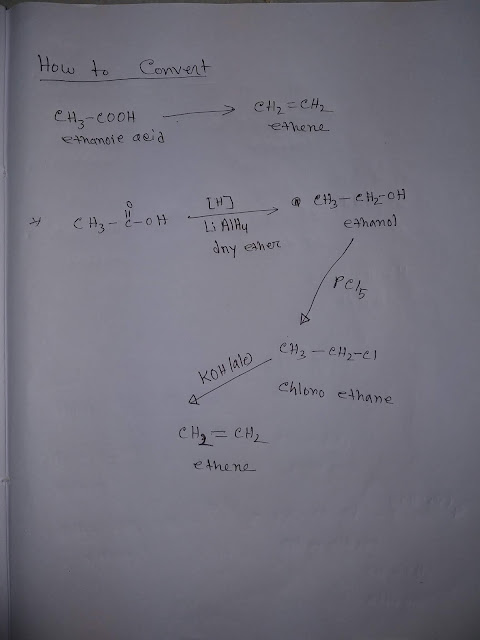How to Remove a Carbon from a Chain || Decrease of Carbon from Chain
How to Remove a Carbon from a Chain || Decrease of Carbon from Chain
To prepare aliphatic lower
bomologue, basic inter conversion compound is alkanoic acid (RCOOH).
The RCOOH is
converted to acid amide (RCONH₂,) which on treatment with Br₂(aq.)and conc. alkali,
produces alkyI amine containing one carbon atom less than parent compound.
bomologue, basic inter conversion compound is alkanoic acid (RCOOH).
The RCOOH is
converted to acid amide (RCONH₂,) which on treatment with Br₂(aq.)and conc. alkali,
produces alkyI amine containing one carbon atom less than parent compound.
This last step
is called Hofmanns's degradation reaction.
is called Hofmanns's degradation reaction.
Beside this, sodium salt of carboxylic acid, on
heating with soda lime (NaOH.CaO), porduces alkane containing one carbon atom less than parent acid .This reaction is called decarboxylation.
heating with soda lime (NaOH.CaO), porduces alkane containing one carbon atom less than parent acid .This reaction is called decarboxylation.
The following examples make it clear to get lower homologue :
Example 1: From propanol :
(1) Ethyl amine,
(ii) Ethanol,
iii) Ethanal,
(iv) Ethanoic acid.
See pictures below









Comments
Post a Comment